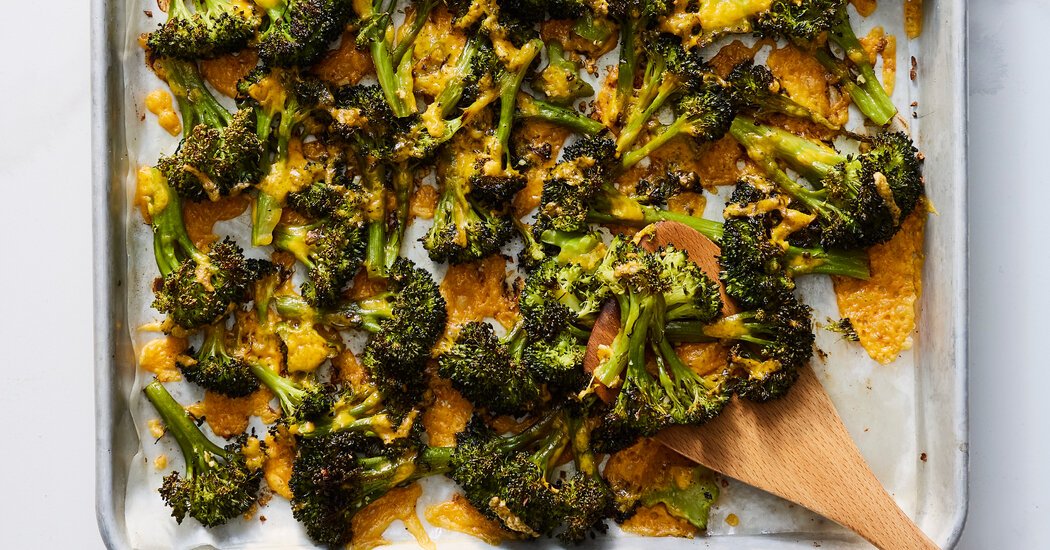[ad_1]
The kindest thing you can do for yourself when you’re stiff from being in the cold is to find some warmth: Because as the chill in your bones starts to fade, so does your stiffness. The same thing happens to hard winter vegetables when they’re enveloped in the heat of the oven — they soften and sweeten as they roast until they’re golden outside and tender in the middle.
A roasted vegetable is a wonderful vegetable, even when cooked simply with only oil, salt and pepper. There are plenty of ways to roast different vegetables, but sometimes, you want a single method that works with everything so you can buy whatever looks good and know what you’re going to do with it.
The sheet-pan method below works just as well on cold weather roots, florets and dark leafy greens as it does with spring’s sprightly asparagus and string beans and summer’s juicy tomatoes and peppers. Just follow these easy instructions and exceptional results are guaranteed:
1. Cut the vegetables into uniform pieces.
Slice your vegetables big or small, just shoot for roughly the same size. Smaller pieces cook more quickly and produce crisper outsides, while larger ones offer more creaminess in the centers. Spread the pieces out on the sheet pan so they don’t steam and end up mushy.
2. Season and oil the vegetables generously.
It’s just like getting a tan at the beach: Oil up for a bronzed exterior. One to two pounds of vegetables need one to three tablespoons of oil and should be sprinkled with nice big pinches of salt (and black pepper if you’d like).
3. Roast on the lowest rack of a hot oven.
The magic oven temperature is 425 degrees, hot enough to caramelize outsides but not so hot that ingredients will burn before the interior cooks through. Setting the sheet pan on the bottom rack, which is nearest to the heat source, turns it into a big skillet and helps the bottoms of the vegetables sizzle and sear. But unlike a skillet on the stovetop, the surrounding heat of the oven simultaneously cooks the other sides, too. Most recipes tell you to stir or flip vegetables halfway through cooking, but this could result in only slightly golden outsides and potentially dry insides. Skip the flip.
4. Flavor the vegetables after cooking.
While you could coat the vegetables before roasting with spices and other seasonings, it’s easier to focus on roasting the vegetables well and not stress about small seasonings scorching. The cook time will depend on the density and size of the vegetables; when a fork pierces through easily, they’re done. If you’d like, toss the roasted vegetables on the hot sheet pan with anything you want to warm or toast, like spices, butter or chopped garlic. Or, contrast the sweetness of the vegetables by sprinkling them with fresh herbs, spicy sauce or a squeeze of tangy lemon juice. To turn the vegetables into a complete meal, serve them over grains or purée them into soup.
[ad_2]
